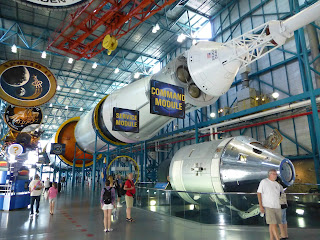
love and support in my previous article on the History of Saturn-V. If you
haven’t read that yet, I would highly recommend giving it a read, this will help you to
get the context of this article (click here to read it). In this article, I
will be giving you the machine overview and try to answer the question, what
this Saturn-V actually is. So, without much further ado, let’s get to the
point.
The Machine Overview: Getting the Rough Idea
Saturn-V is a 3-stage vehicle, with each stage namely; S-IC first
stage, S-II second stage, S-IVB third stage, and Instrument unit. If you find
the stage names confusing, don’t worry I’ll also explain the logic behind the nomenclature. But why did the rocket need 3 stages to get to the moon? The simple answer is mass management and gravity or simply the Tyranny of the Rocket Equation; a massive amount of fuel is needed to get to high altitudes, 85-90% of the rocket is just the fuel, and the rest 10-15% comprises the dry mass. In that case, it is more efficient to just expend a stage after the fuel is used up. though there are many on-paper concepts of Single Stage To Orbit (SSTO) rockets, none of them have flown yet (SSTOs will be covered in a future article). So, staging seems a wiser and better idea to get to orbit.
 |
| Saturn-V with all its stages in Houston, USA |
S-IC First Stage:
The 1st stage was 42m tall, 10m in
diameter, and provided 33000kN (33MN) of thrust to get the rocket through the
first 61km of ascent. The dry mass of the stage was 131000kg and, once fully fueled it weighed 2.3 million kg. Rocket-grade kerosene (RP-1) was used as the fuel for this
particular stage and liquid oxygen (Lox) was used as the oxidizer. The stage
had five F-1 engines in a quincunx arrangement. The center engine was fixed
whereas the four outer engines could be gimballed using hydraulic systems to
control the rocket.
The Boeing Company was awarded the contract to
manufacture the S-IC first stage on December 15, 1961. By then, the general
design of the first stage had been decided by the engineers at the MSFC. The MSFC engineers also built the first 3 test stages (S-IC-T, S-IC-S, S-IC-F), and the first
two flight models (S-IC-1 and -2). The main place of manufacture was the
Michoud Assembly Facility, New Orleans. Wind tunnel testing took place in
Seattle and the machining of the tools needed to build the stages at Wichita,
Kansas.
months to complete a stage. The timeline may feel absurd because today, SpaceX
can manufacture its Falcon-9 rocket in under 3 months, but we need to keep
in mind the scale and the time of manufacture. The rocket was way bigger and
way more capable than an F9 and again it was being manufactured in the 1960s
and 70s, a time when automated manufacturing basically did not exist.
The largest and heaviest single component of the S-IC was the thrust
structure, with a mass of 22000kg. It
was designed to support the thrust of the five engines and redistribute it
evenly across the base of the rocket. There were four anchors which held down
the rocket as it built thrust. These were among the largest aluminum forgings
produced in the U.S. at the time, 4.3m long and 816kg in weight.
The four stabilizing fins withstood a temperature of 1100 °C.
Now, S-I means Stage-1, and C means, it is the third design iteration of the
stage and hence the name S-1C.
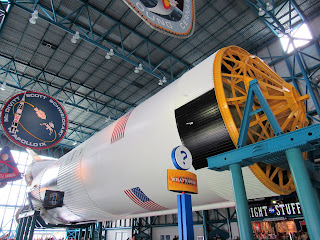 |
| S-IC stage on display at the Kennedy Space Centre |
S-II Second Stage:
The 2nd stage was about 25m tall,
10m in diameter, and provided 4,400kN of thrust to accelerate the Saturn-V
through the upper atmosphere. The dry mass of the stage was 36200kg and, when fully fueled, it weighed 480000kg. Liquid hydrogen (LH2) was used as the fuel in
this stage and liquid oxygen (Lox) was used as the oxidizer. The stage had five
J-2 engines in a quincunx pattern. Similar to the S-IC; the center engine was fixed and the outer four were hydraulically gimballed.
North American Aviation was awarded the contract to
manufacture S-II second stage on 11th September 1961 (Note: it
is the same company that was awarded the contract for the Apollo Command /
Service Module). They were also provided with the manufacturing plant at Seal
Beach, California by the government.
Interestingly, this stage when fully loaded; had only 7.6% hardware, and the rest 92.4% comprised LH2 and Lox. The S-II stage had some very brilliant ways to contain highly volatile liquid hydrogen and even prevent turbulence due to fuel sloshing. We will surely cover them in detail in a future article.
S-II simply means Stage-2, the meaning is quite
literal.
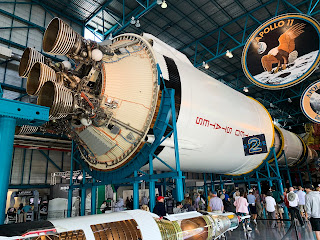 |
| S-II stage on display at the Kennedy Space Centre |
S-IVB Third Stage:
The 3rd stage was 17.8m tall, 6.6m in diameter and could provide a maximum thrust of 890kN (S-IVB 200 series) or 1MN (S-IVB 500 series). The stage weighed 13500kg when empty and 123000kg when fully fueled. Similar to the S-II stage it used LH2 and Lox fuel and oxidizer respectively. The stage used only one J-2 engine and was restartable. For lunar missions, it was fired twice: first for Earth orbit insertion after second stage cutoff (SECO), and then for translunar injection (TLI).
This stage evolved from the upper stage of the
Saturn 1 rocket and was the first stage of the Saturn-V to be designed.
NASA awarded the manufacturing contract to Douglas Aircraft Company on 19
April 1960. At the same time, it was decided to make the Saturn-1b that
would also use the S-IVB as the second stage and could be used for testing the
Apollo spacecraft in the Earth orbit.
of the C-4 rocket (covered in the previous article), and the ‘B’ because, it
was the second manufacturing iteration, the previous version used a cluster of
six J-2 engines. Hence the name, S-IVB.
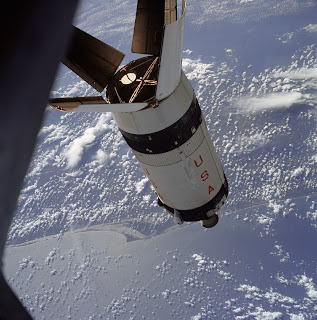 |
| S-IVB stage separation in Apollo-7 mission |
Instrument Unit:
 |
| Manufacturing the Instrument Unit |
The instrument unit was built by IBM and was placed on top of the third stage. This was the brain of the whole rocket and controlled all the operations of the rocket just before liftoff until the S-IVB stage was discarded. Now guess what, we have a whole article fully dedicated to the sheer brilliancy of this 60s old school computer. Go, check that out!!
These were the 3 stages of the mighty Saturn-V rocket, once all the stages were built, they were vertically integrated at the Vehicle Assembly Building (VAB) at NASA’s Kennedy Space Centre, Florida. It took an average of 2 years to build a single Saturn-V and needed a giant crawler-transporter for carrying the beast to the launchpad.
The project did cost around 6.417 billion USD, with cost per launch leading up to a whopping 185 million USD (well today it would have cost $1.33 billion). If we take the inflation rate as 7.19, then this whole project would cost around $46.11 billion (as of 2021) to put things into perspective NASA’s 2021 budget is $23.3billion, and in the 60s and 70s Apollo wasn’t the only program that NASA was funding, that’s a lot of money!
Though these accomplishments seem nuts, trust me these are nothing compared to the glorious fire-breathing bells that the rocket had underneath it. Stay tuned because in my next article we’ll be stripping down the engines of Saturn-V. Get ready to be blown away by the marvels of modern engineering.
If you like our articles then please follow this blog to get the latest updates directly to you (buttons are available in the right sidebar or in the bottom menu bar if you are reading this article on mobile).
To know the basics of the quantum world, astronomy, and space exploration you can check out the book “Through the wormhole” on amazon kindle by Ratnadeep Das Choudhury.
Thanks for Reading!!!
Check out our other blog posts!!!
Don’t forget to share this post in your social media handles to enrich everyone’s knowledge!!!
See you Again!!!!!
-Ayushman Dash
Chief Space Exploration Writer
The Dynamic Frequency


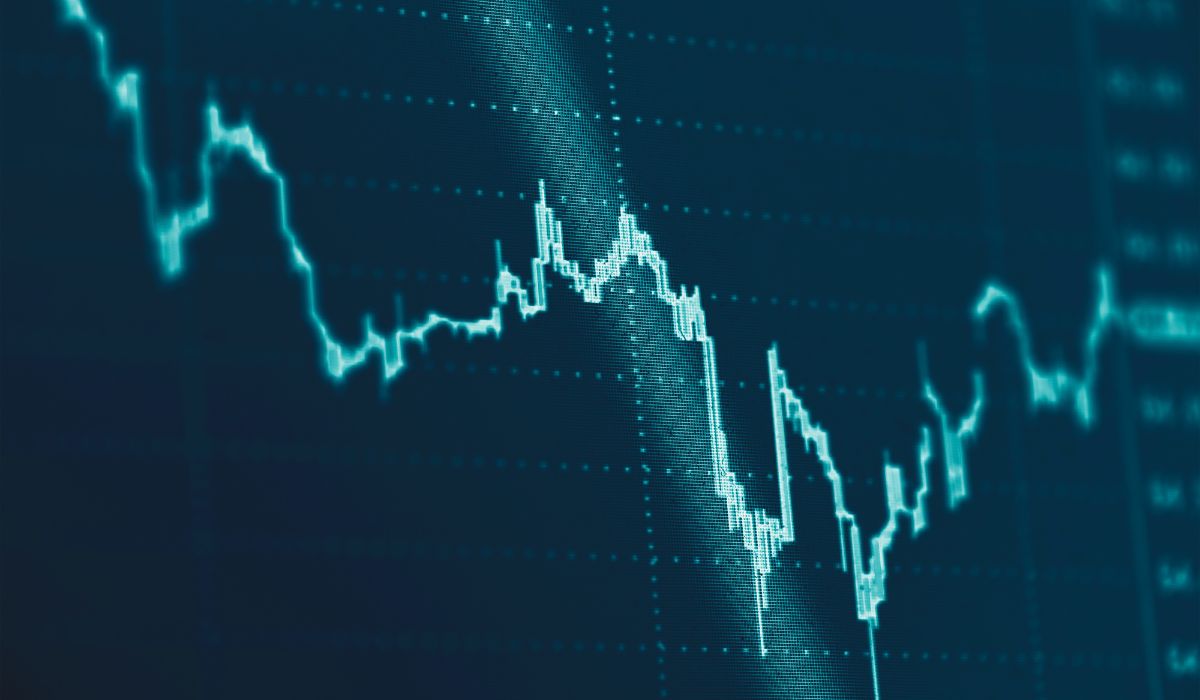
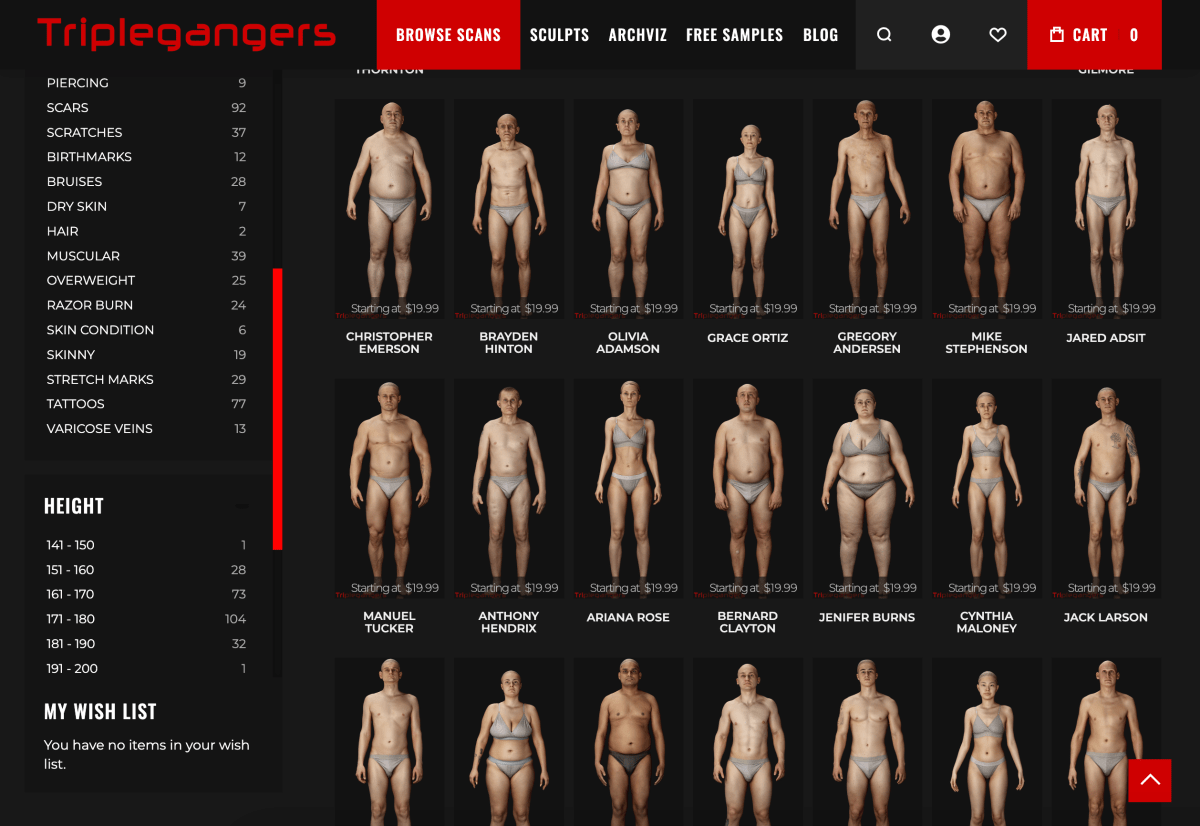



Leave a Comment